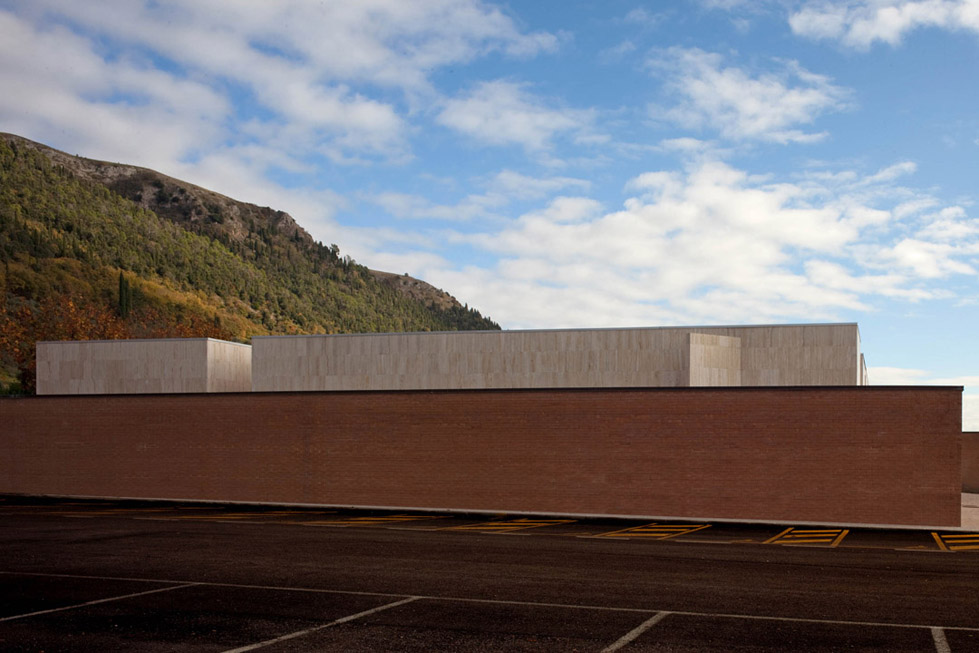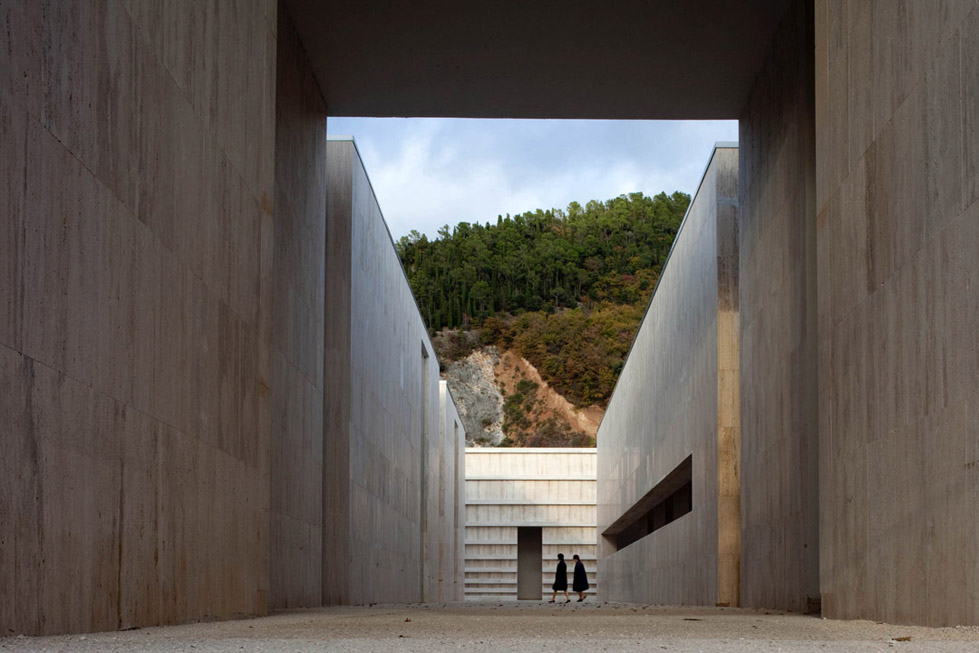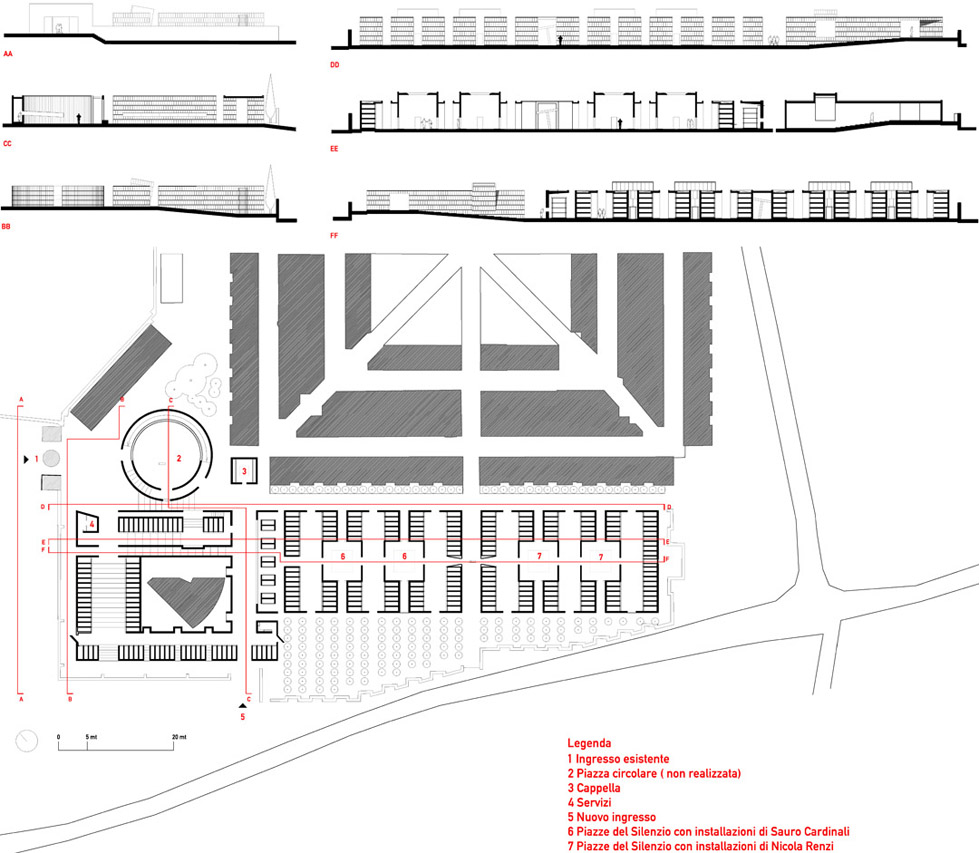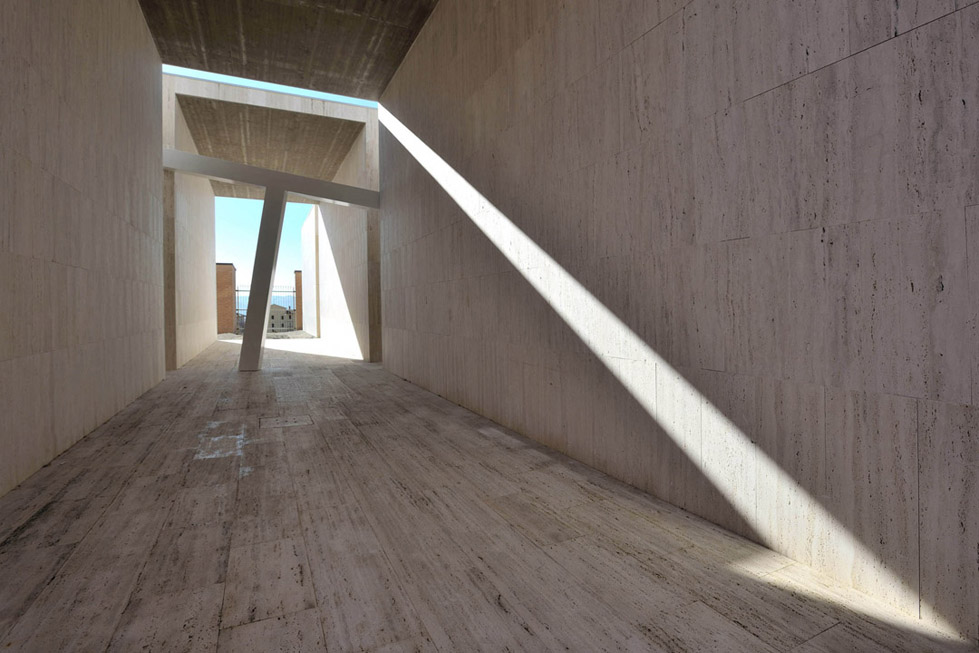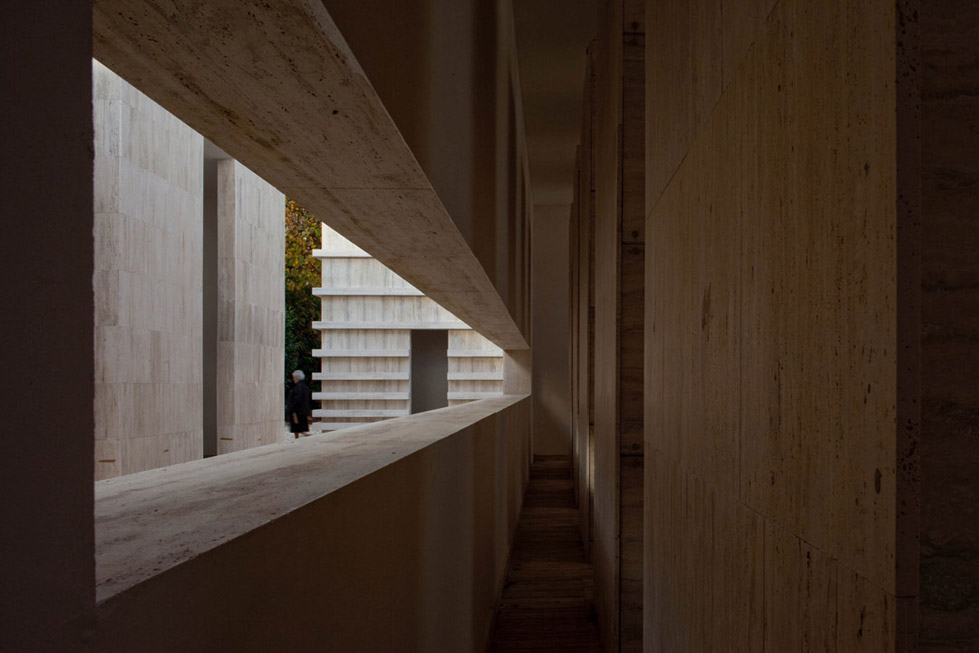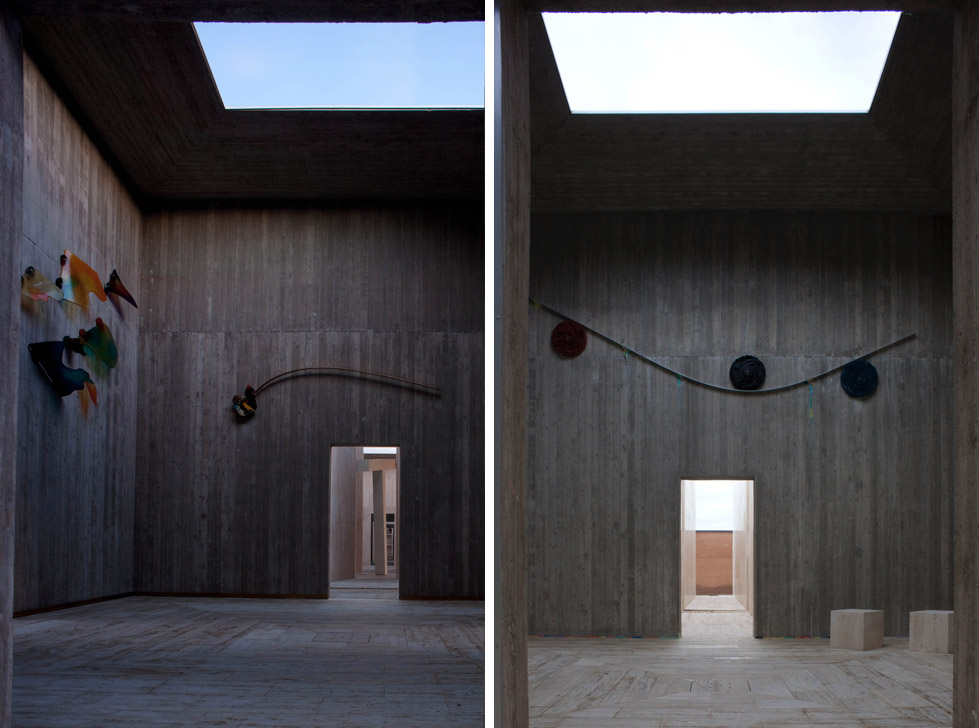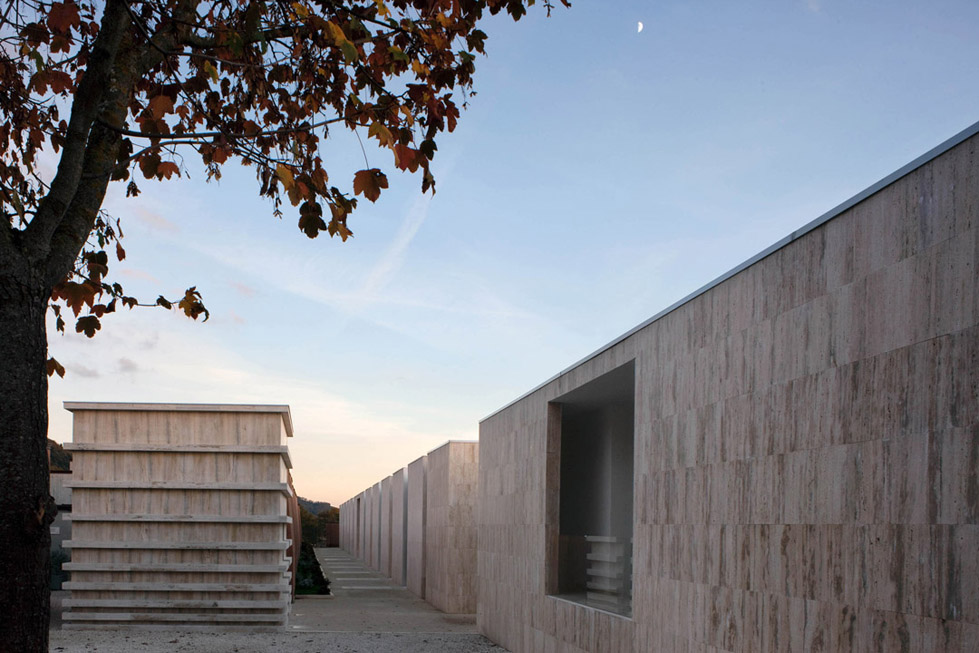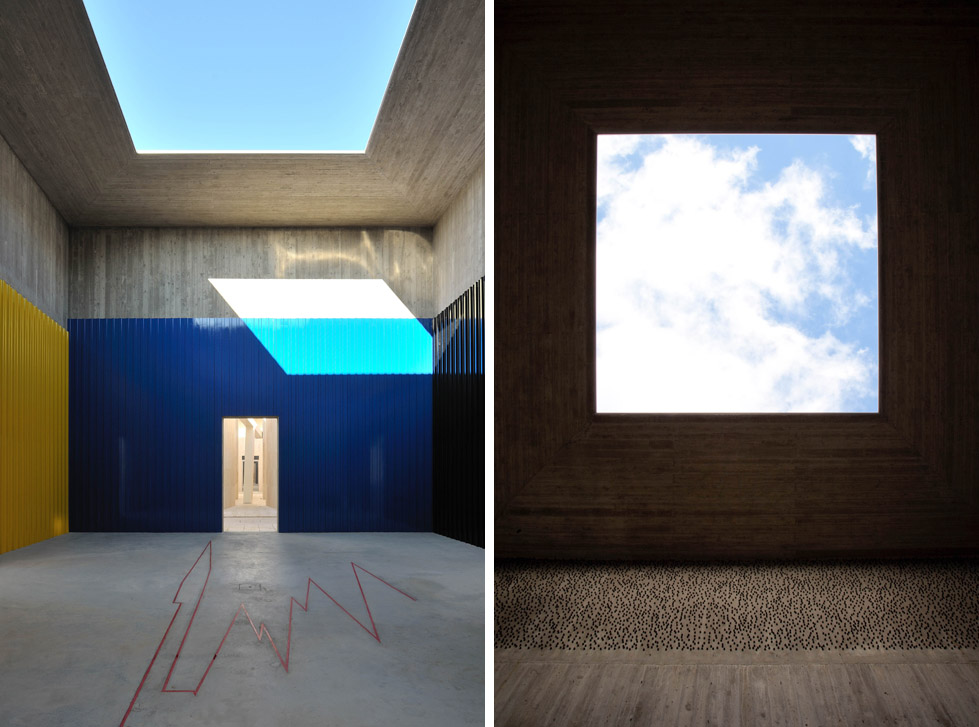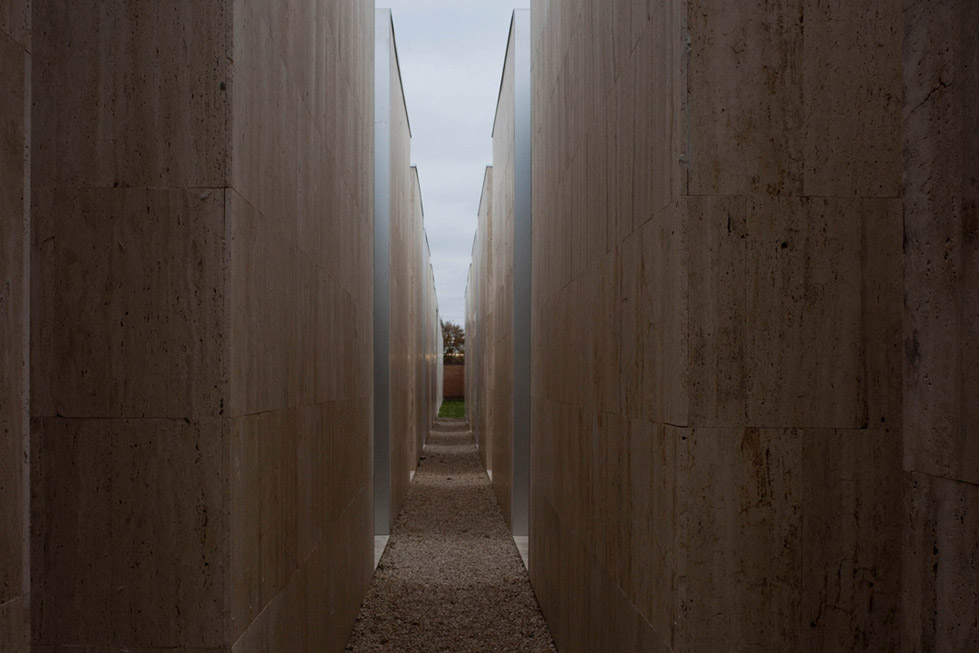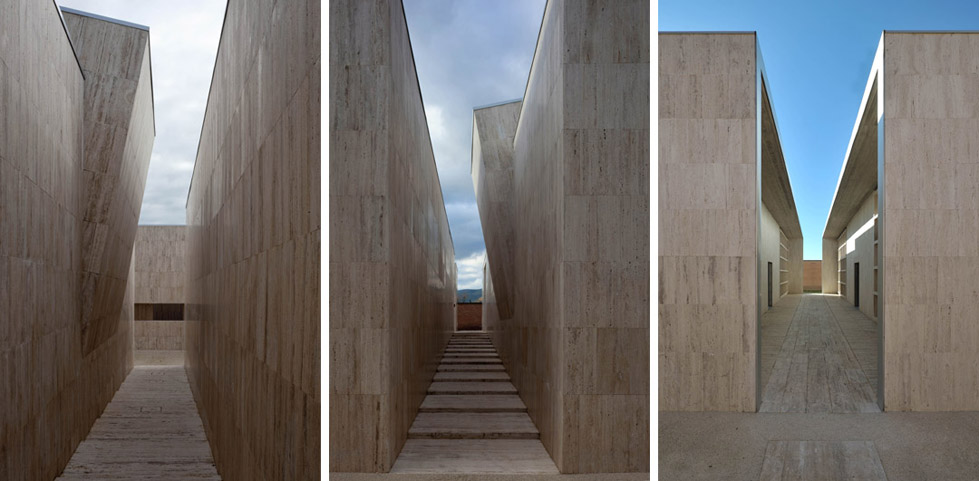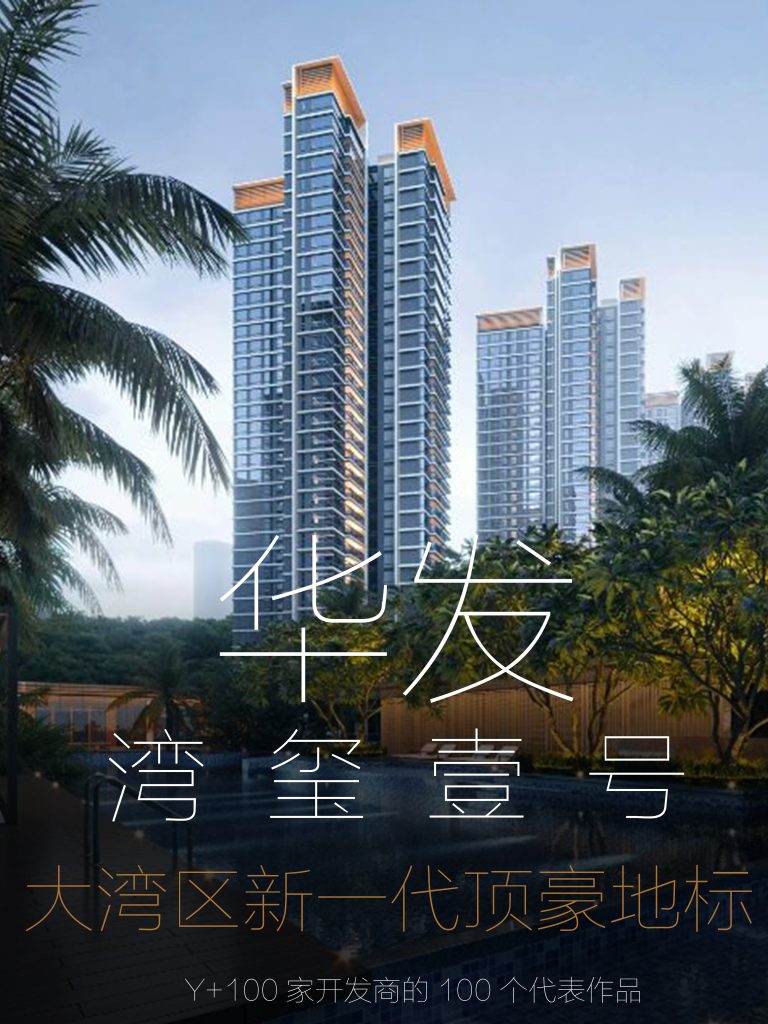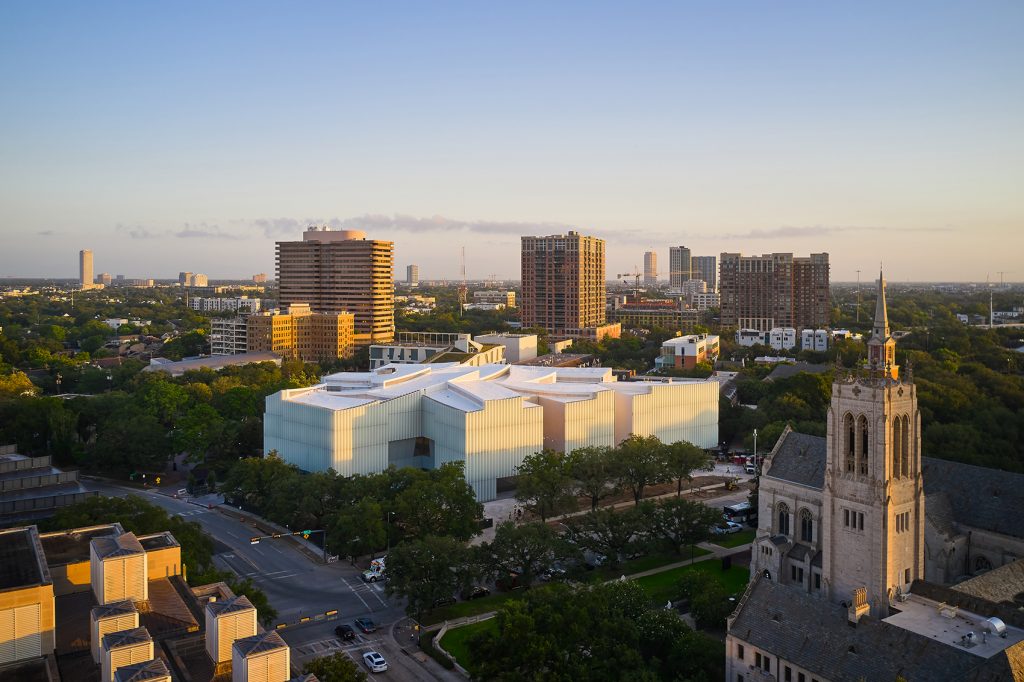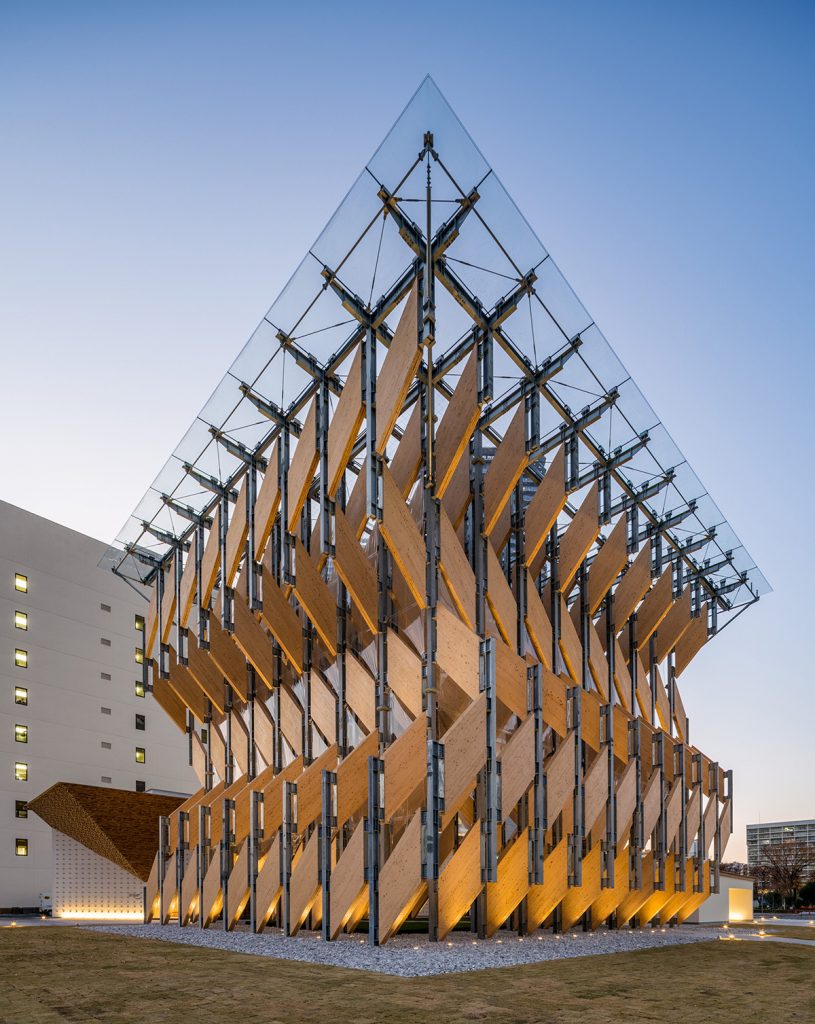古比奥墓地的扩建可以理解为公共项目新模式的研究结果,因为一方面它是意大利最重要之一的古老中世纪城市墓地新扩建,也同时在城市结构中重新定义了
本身的意义与定位。
The enlargement of the Gubbio cemetery is the result of studies of a new model of public building. On the one hand, it has developed the latest phase of
growth of the monumental cemetery in Gubbio, one of Italy’s most important medieval cities. On the other hand, it intends to redefine its meaning and
centrality within the structure of the city.
受到James Turrell系列作品Skyspaces的启发,建立一系列顶上独立于墓地而存在的能让人放松,反思的艺术空间,这些空间顶部均有正方形朝天空开放的窗口,
从黎明到黄昏,光影无幻。这一方天,让人仿佛挣脱地球引力,到达另外一个层次:心灵的束缚被解开;视野和思维得以远游;精神被深层次洗涤和升华。这系
列十分特别的空间与建筑紧密关联。
These spaces were inspired by James Turrell’s Skyspaces and are designed to be enjoyable public areas, independently from the cemetery, offering an
opportunity to pause and reflect. These are cubic“squares of silence” having open ceilings that evoke windows open to the sky.
The sky thus framed opens the mind to the reign of the invisible, allowing sight and thought to abandon Mother Earth’s gravity and acquire a more aerial
and spiritual dimension.
This relationship with the sky intends to define space that is also time, in such a way that you can find yourself again, a space that thrusts the horizon
upwards like a metaphor of the boundaries of heaven, the last horizon of our life in a modern city. At the same time, opening to the sky, it re-interprets Leon
Battista Alberti’s window, a window that is like a threshold, imagined by the great Renaissance architect as the only architectural artifice able to “instil the
peacefulness” evoked by the celestial void that, descending from above, takes us back to the imperturbable state of the soul without which overcoming the
adversities of life is impossible.
The atmosphere of these “Squares of silence” is made more suggestive by a series of permanent site-specific artistic installations that capture the changing
effects of light and shadow from dawn to dusk. These installations were created by two important Italian artists (Sauro Cardinali and Nicola Renzi), with
whom collaboration began during the initial stage of the project.
This contribution, strongly linked with architecture, helps to define a new space for silence and meditation within the city.
William Richard Lethaby说人类置身大千世界中难以整体理解世界,只有先摆脱周遭,才能理解去它。从这个意义上建筑可以理解为世界的缩影,它代表了一种
界限,我们可以通过建筑,去感受世界的存在。
William Richard Lethaby said that human beings cannot understand the world as a whole. They must first move away from it, and only after having achieved
this detachment can they achieve understanding.
In this sense a building can be seen as a model of the world; it represents an order we cannot directly experience in the world, but at the same time it makes
perceptible, within the limits of a building, that which exists in the world.
PHOTO ?Alessandra Chemollo_ORCH & Massimo Marini
Project:
Andrea Dragoni,
with Francesco Pes
Collaborators:
Andrea Moscetti Castellani
Giorgio Bettelli
Michela Donini
Raul Cambiotti
Antonio Ragnacci
Cristian Cretaro
Matteo Scoccia
